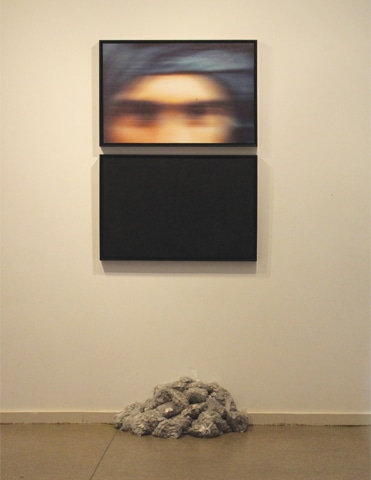Muzzamil Ruheel is an artist whose practice is difficult to describe because it encompasses a wide range of subjects and mediums, neatly tied together through his visual use of text. “My work is not based on a single notion, but is drawn from an open process of observing and gathering visual and conceptual materials,” he explains. His work, thus, spans social, political, historical and religious themes articulated through a personal perspective, resulting in a whimsical satire of our times.
His latest body of work at the Canvas Gallery, Hearsay, is a similar rendition of stories collected over two years of travelling across Pakistan — stories of power, greed, betrayal, spirituality, revenge and politics, diverse in their content but connected through a single question — is it truth or fiction? These verbally relayed stories linked to certain localities have the quality of myths and legends, and as the artists searched for evidence in official documents, he discovered some to be completely missing, while others existed in various versions.
In the piece ‘Robber Or Robin’, the artist refers to a story about a man who defied an oppressive regime and became a local hero, a leader chosen by the people to free them from tyranny. Yet he was remembered as a bandit, thief and rebel, as the rulers of the land tried to suppress his uprising and paint him as a villain. One man’s rebel is another man’s freedom fighter, and it all depends on what you choose to believe, which eventually defines who you are and where you come from.
Muzzamil Ruheel investigates the fine line between fact and fabrication
The truth lies somewhere buried at the bottom of fiction, and the artist seeks to merely present questions for the viewers to ponder, providing no definite answers of his own. In his distinct style he comments on differences of perception through a barrage of beautifully calligraphed Urdu text relaying the collected stories in their raw, unedited form. As the text overlaps and fuses into the background, almost a texture on the surface, it’s near obscurity and sudden visibility from certain angles mimics this fickle nature of history.

In pieces like ‘Upside Down’ and ‘She Holds The Keys’ the stories presented are abstracted into mere shapes that the artist came to associate with them. While they represent these stories for the artist, they become more ambiguous for the viewer. Ruheel feels this is important in order to engage the viewer and force them to ask questions. It piques the curiosity and forces the audience to research, perhaps as the artist himself did, in order to discover the stories behind the art, instead of getting all the information on the first viewing.
As you progress through the show, the abstract visuals change into more direct images used as visual metaphors by the artist. The accompanying text seems to be making broader connections, again questioning certain aspects of history, politics, society and human behaviour. The piece ‘Ice Cream’ shows an image from a football match at a pivotal point as everyone screams in anticipation of their desired outcome. It is reminiscent of our current political state where the common people scream for their rights, yet are momentarily pacified with “ice cream”, receiving nothing of substance for all their struggles. Similar themes are touched upon in the piece ‘Regular Treat.’

Through his work, Ruheel questions the authenticity of history as we know it, as it becomes another story written by the victor with more authority, validated through the power of the written word. Which version of the truth is based on reality? Is the legend just a perverted version of the truth, or are official histories just stories made up by those in power? These are the questions the artist presents to us with layers of irony imbued within his stories. What one realises, however, is that in the end, it is of little importance which histories are real, as they all are part of our landscape, and help define our culture and who we are as a people. It is not so much about what is the truth but what we believe to be our truth, as the effects it has in shaping our present and our future are more tangible than any fact.
“Hearsay” was on display at the Canvas Gallery from August 1 till August 10, 2017.
Published in Dawn, EOS, August 20th, 2017
















































Dear visitor, the comments section is undergoing an overhaul and will return soon.